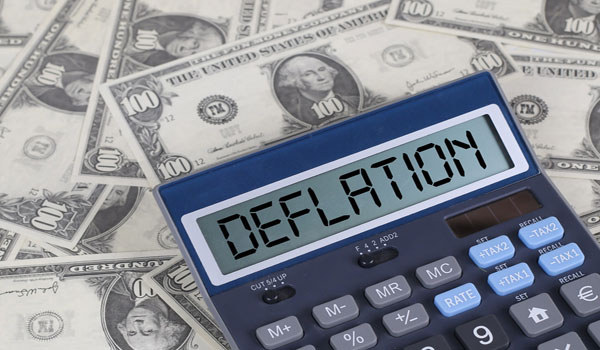Deflation occurs when the average price is lowered to the point that the rate of inflation appears negative.
It is the complete antithesis of the sometimes observed inflation. In most situations, deflation is caused by a decrease in the monetary policy or exchange controls.
Reduction governmental or private expenditure funding can also contribute to this circumstance. Deflation significantly increases inflation due to a complete lack of competition.
The goal of the federal reserve is to keep things aggregate demand unchanged by preventing extreme deflation/inflation.
They can inject more money into people’s pockets to counteract the deflationary effect.
Depression usually causes the price of goods to exceed the amount of money in circulation.
Deflation reduces the aggregate capital requirements, manpower, commodities, and goods while maintaining their actual value. Deflation has long been a source of alarm for economics.
On the surface, deflation seems to favor customers because it allows them to buy more services or products with about the same marginal real income.
Financial deflation can only really be accompanied by a decline in the availability of currency or investment funds purchasable in money, according to the description.
Financial institutions, including the Treasury Department, have the most impact on the supply of money in contemporary days.
When the value of housing and credits decreases without a subsequent drop in economic production, all goods’ prices begin to decline.
Deflationary cycles are most common after long stretches of unnecessary credit stimulus. The early 1930s were the only other time the American Government suffered major deflation.
The collapse in the capital demand as a result of disastrous bank failures was a significant contributor to this disinflationary era.
In current history, other countries, such as Taiwan in the early 1980s, have undergone deflation.
Milton Friedman, a globe theorist, concluded that even under the optimal strategy, in which the banking sector wants a pace of deflation equivalent to the money supply on treasury securities, the local currency should really be nil and the exchange rate should decline gradually at the cost of borrowing.
His theory gave rise to the Adam smith law, which is a quantitative easing rule.
However, falling prices can be influenced by a variety of other causes, including a reduction in aggregate demand (the overall output for products and services) and productivity improvements.
A drop in consumer spending usually leads to a drop in prices. Reduced government debt, financial sector failure, investor willingness to boost investments, and changing economic policies are all contributing factors to this change (higher interest rates).
Lower prices could also cause inflammation when the economy’s demand exceeds the availability of circulation investment capital.
This happens most frequently when technology improves national economic competitiveness, and it is often distributed in products and industries that benefit from new technologies.
As technology progresses, businesses become more successful. These organizational enhancements result in reduced manufacturing costs and time reductions that are passed on to customers at cheaper prices.
This differs from but is analogous to, generalized high inflation, which is characterized by a severe reduction in the price point and an improvement in the buying influence of corporations.
Price deflation caused by increased productivity varies by industry.
Evaluate how improved efficiency impacts the transportation industry, for example. During the last few months, technological advancements have led to dramatic decreases in the total value per megabytes of data.
The typical income of one megabyte of data in 1978 became $437,500; through 2010, the typical income had dropped to three cents.
As a result of this decrease, the costs of industrial goods that are using engineering have also dropped dramatically.
Going to follow the Great Recession, when economic deflation combined with high poverty and increasing defaults, some policymakers thought deflation was a bad thing.
Following that, most financial institutions changed quantitative policy to support steady rises in the central bank, even though it resulted in excessive inflationary pressures and allowed borrowers to borrow excessively.
Deflation renders debt funding less cost-effective for states, corporations, and customers. Deflation, on the other hand, boosts the economic prosperity of mortgage equity funding.
Businesses that generate substantial cash reserves or have comparatively little exposure are more appealing to shareholders during a period of deflation.
The inverse is valid for heavily indebted companies with no cash on hand. Deflation also promotes rising yields and raises the appropriate management fee on assets.
Deflation differs from inflationary pressures in that the latter means a reduction in the degree of unemployment, while deflation indicates negative aggregate demand.
Deflation is common during economic downturns. It is regarded as a negative international occurrence and can have a wide range of negative consequences for the nation, including:
Underemployment is rising.
The unemployment rate would increase during a period of deflation. Since prices are falling, manufacturers are reducing their expenses by employing people.
Debt’s actual value has risen.
Deflation is related to an increase in house prices, which causes the actual price of the bond to rise.
As a result, customers are more likely to postpone their purchases.
Inflationary spiral
This is a scenario in which falling inflation rates set off a chain of events that results in lower output, lower salaries, reduced prices, and sometimes even cheaper price increases.
The deflation trend is a massive macroeconomic threat during the depression because it deteriorates the financial environment.
Related: What is inflation?


